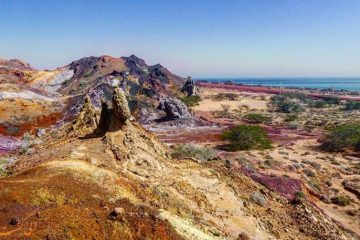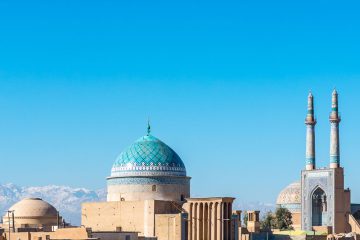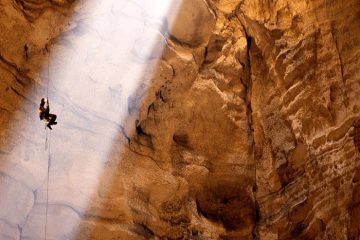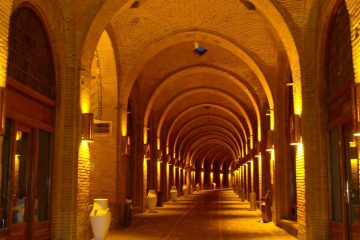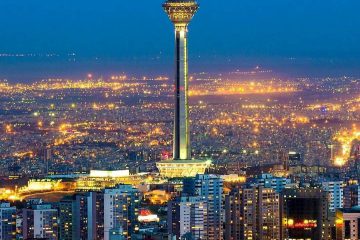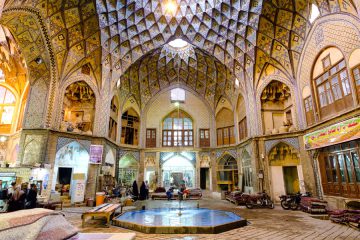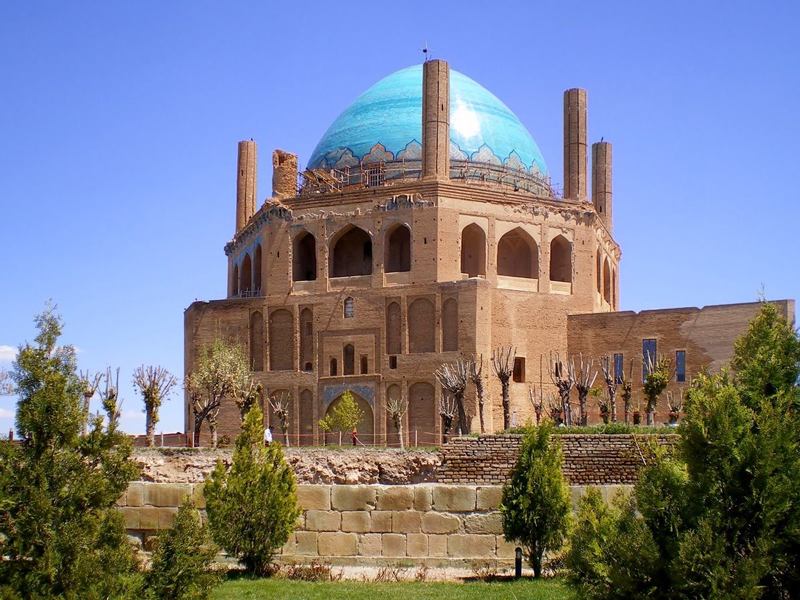
Soltaniyeh Dome
Nestled within the vast Iranian plateau stands the remarkable Soltaniyeh Dome—a breathtaking mausoleum and mosque complex that showcases the pinnacle of Ilkhanid-era architectural brilliance.
In the late 13th century, Mongol ruler Öljeitü oversaw the construction of this remarkable structure, which served as both his final resting place and a significant religious center.
This remarkable site, acknowledged by UNESCO, displays remarkable architecture and rich historical significance.
Exploring the Dome of Soltaniyeh: Interesting Facts
Known for its immense size, the Dome of Soltaniyeh is the third-largest brick dome in the world, after the Pantheon in Rome and the Hagia Sophia in Istanbul.
The monument was inscribed as a UNESCO World Heritage Site in 2005.
The tomb of Öljeitü, the 8th king of the Ilkhanate, rests within the Dome of Soltaniyeh.
The dome’s design, featuring 12 ribs and 8 sides, symbolizes the 12 Imams in Shia Islam.
The entrance of the mausoleum is perfectly aligned with the direction of sunrise on the first day of spring.
The dome’s building began with a dream Öljaitü had, making it more than just a structure—it became a symbol of his vision to gather esteemed Islamic figures’ remains at the site.
The Dome of Soltaniyeh’s Story
Öljaitü, the seventh Ilkhanate ruler and son of King Arghun, ordered the construction of the impressive Dome of Soltaniyeh in northwestern Iran. This monument symbolizes a period of cultural development and reconstruction after the tumult caused by the Mongol invasion of Iran and the destruction of key cities.
Inspired by a vivid dream, Öljaitü, aiming to unite esteemed Islamic figures, chose Soltaniyeh, once his father’s summer capital, as the focal point of his reign and initiated the dome’s construction. His conversion to Shia Islam during a significant pilgrimage to Iraq, guided by renowned scholars and clerics, deepened his resolve to inter the remains of revered figures like Imam Ali and Imam Hussain within his mausoleum beneath the dome’s grandeur.
Öljaitü’s ambitious vision included relocating the bodies of the revered imams from Najaf and Karbala to a modest tomb alongside his own within the Soltanieh complex. However, despite his determination, this grand plan encountered obstacles. Some believe it was hindered by a subsequent dream he had, while others cite opposition from Shia scholars. Regardless of the cause, Öljaitü’s noble intentions were left unrealized.
Öljaitü’s reign marked a turning point for the Ilkhanate dynasty. Despite the initial destruction, his era saw a revival erection of the Soltaniyeh dome, fueled by Öljaitü’s vision and religious devotion, which serves as a poignant emblem of this cultural resurgence. Though scars from the past remain, the dome’s enduring presence reflects Iran’s resilience and cultural legacy.
Ghasabeh Qanat
The mausoleum is adorned with eight graceful minarets, each soaring to a height of 48 meters (157 feet), accentuating its imposing stature and elegance. These slender towers serve dual roles, adding to the visual appeal of the structure while also functioning as call towers for prayer, a testament to the seamless integration of form and function in Islamic architecture.

Furthermore, the exterior of the dome is embellished with elaborate tilework and intricate geometric patterns, showcasing the exceptional craftsmanship of artisans from the era. These decorative elements not only enhance the aesthetic allure of the mausoleum but also symbolize the cultural richness and artistic sophistication of the time.
Together, the majestic minarets and exquisite tilework contribute to the grandeur and beauty of the mausoleum, inviting admiration and awe from visitors who marvel at the architectural marvels of the past.
The mausoleum boasts four imposing iwans, strategically positioned to face the cardinal directions, offering visitors access to its interior from all angles. Adorned with intricate tilework and mesmerizing geometric designs, each iwan serves as a splendid introduction to the architectural wonders that lie beyond its threshold.
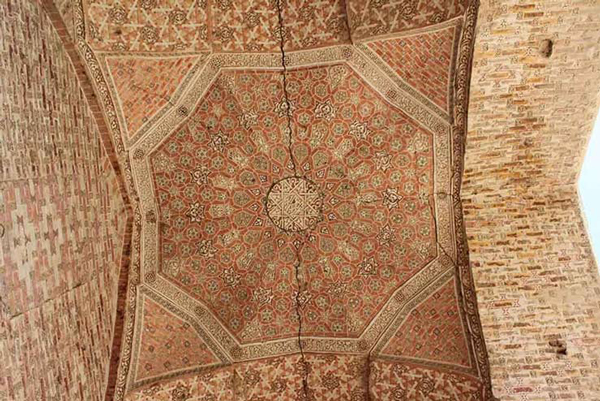
Inside the dome, visitors are greeted by a symphony of intricate plasterwork, meticulously crafted to captivate the senses. Embellished with mesmerizing calligraphy, delicate arabesque motifs, and mesmerizing geometric patterns, the interior decor pays homage to the rich tradition of Islamic artistry.

Initially built as a mausoleum, the Dome of Soltaniyeh was intended to be the eternal resting place of Öljaitü. This architectural marvel reflects the longstanding Islamic tradition of constructing grand mausoleums to honor and commemorate significant individuals.
The Sacred Chamber: Torbat Khaneh
Situated on the southern side, the Torbat Khaneh bears profound religious significance. Spanning 17 meters in length, 8 meters in width, and 16 meters in height, this chamber holds sacred soil sourced from Najaf and Karbala, esteemed pilgrimage sites for Shi’a Muslims. Öljaitü, the visionary behind the mausoleum, incorporated soil from the shrine of Imam Hussein into the construction, elevating its spiritual resonance.
The Mihrab, a sacred prayer niche nestled within the Torbat Khaneh, boasts embellished walls adorned with inscriptions in both Kufic and Thuluth script. These intricate designs, etched using the revered soil sourced from Najaf and Karbala, further enhance the sanctity and spiritual ambiance of this revered site.
The Subterranean Chamber of Sardabeh
Located beneath the Torbat Khaneh, the Sardabeh serves as the crypt where Öljaitü finds eternal repose. This chamber embodies a profound reverence for the departed, marked by its humble entrance, symbolizing utmost humility in the presence of the deceased. While much of the interior of the Sardabeh remains shrouded in mystery, its existence underscores the primary purpose of the mausoleum as a sacred resting place for Öljaitü.
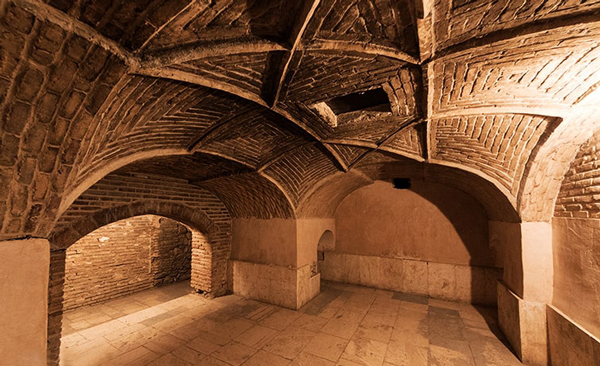
The Revolutionary Gonbad Khaneh
An architectural marvel ahead of its time, the Gonbad Khaneh introduced a pioneering technique utilizing dual layers of brick with an air gap in between. This innovative design not only bolstered the dome’s structural integrity but also provided superior thermal insulation, safeguarding against earthquakes and extreme weather phenomena.
The dome includes strategically placed light wells, serving as both sources of illumination and early sundials. Before modern clocks, these architectural features allowed for accurate timekeeping, showcasing the dome’s ingenious design at a time when advanced technology was scarce.
Location and Access of the Dome of Soltaniyeh
Address: Soltaniyeh City, Zanjan Province, Iran
In Conclusion
The Dome of Soltaniyeh isn’t just an architectural wonder; it’s a symbol of historical richness and cultural diversity in the Zanjan Province.
Whether you’re fascinated by its stunning architecture, intrigued by the region’s rich history, or eager to immerse yourself in the local culture, a visit to Soltaniyeh guarantees an enriching journey through time and tradition.

